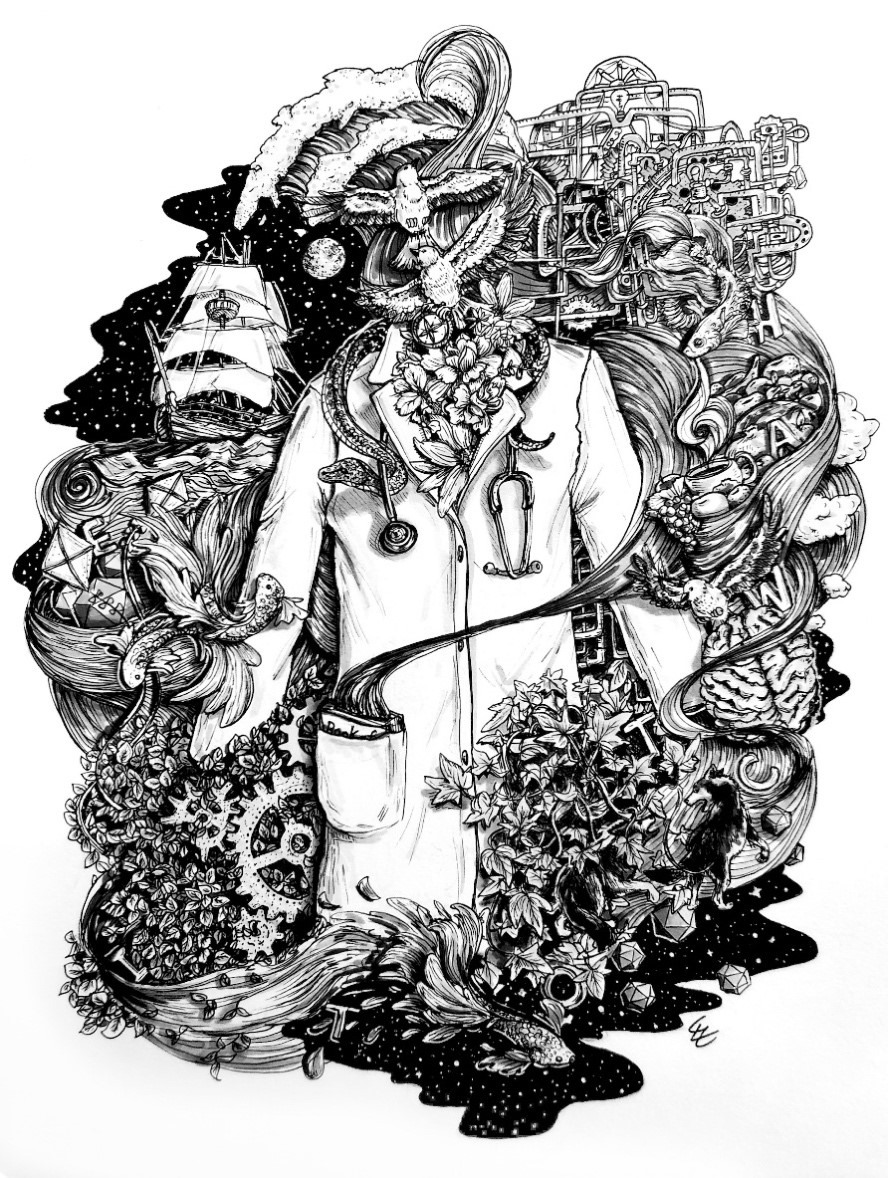Abstract
White coats are symbols of power that express historically entrenched ideals of clinical purity, sterility, and control. These ideals tend to oversimplify ethical and clinical complexities inherent in evolutions constantly taking place in health care practice. This pen and ink drawing interrogates these ideals visually and reimagines the white coat in the context of more realistic dynamism.
Figure. A Living Symbol

Media
Pen and ink on paper.
Emergence
Biomedical research constantly produces new data that must be translated and integrated into the evidence bases that justify practice changes. This illustration represents the frenetic pace of data production and the demands it places on clinicians to transform densely packed information, contextualize it into knowledge, apply it to patient care, and respond compassionately to individual patients’ and communities’ health needs.
Patients’ lives are inextricably linked to ever-changing social, environmental, and cultural conditions.1 In the illustration, a textbook, symbolizing classroom-based biomedical knowledge, peeks out of the white coat pocket. This book’s offerings are illustrated as a winding river converging with realities of patient care and their embeddedness in family, community, national, and global histories.
Conveyance
In health care, practice evolves because decision making evolves. If data emergence is represented as a river, decisions can be represented as a river's movement. The flow is not linear but travels in loops, picking up and depositing “sediment,” emerging, conveying, navigating, responding. In the illustration, flowers, leaves, animals, and a human brain nested in dense foliage suggest key roles of human intelligence in guiding, perhaps even directing, health care decision making. One such role involves interpreting and applying data from artificial intelligence clinical applications,2 represented as objects used to instrumentalize and mechanize information presentation and decision support.
Clinicians are not conveyors of patients along this river but are conveyed with patients, as birds might navigate by instinct or ships might navigate by compass. Easy decisions and clear answers are few; important crises and hard choices are many.
References
- Maani N, Galea S. The role of physicians in addressing social determinants of health. JAMA. 2020;323(16):1551-1552.
- He J, Baxter SL, Xu J, Zhou X, Zhang K. The practical implementation of artificial intelligence technologies in medicine. Nat Med. 2019;25(1):30-36.



